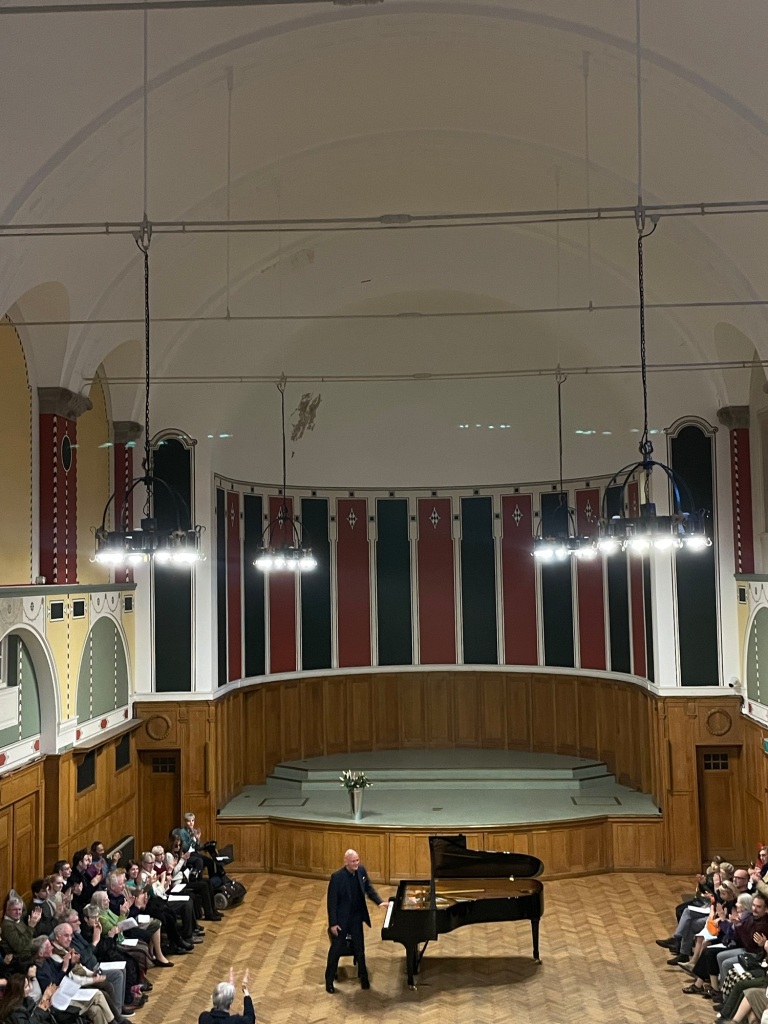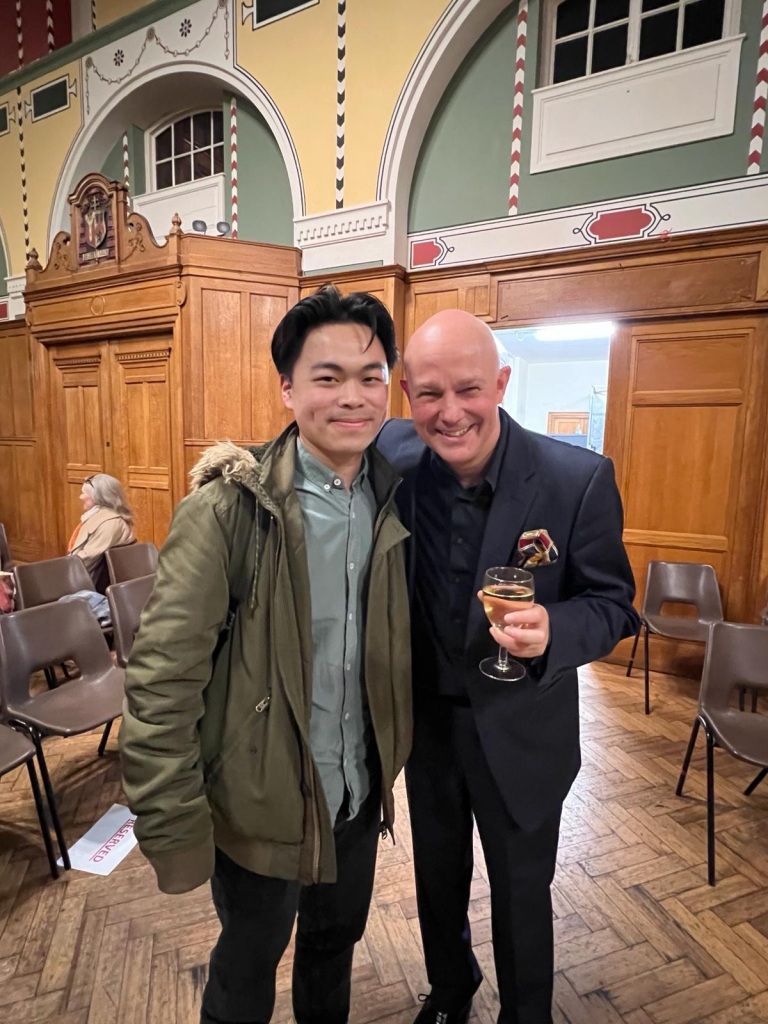Programme:
Chopin Polonaise-Fantasie, op. 61
Schumann Carnaval, op. 9
Chopin Berceuse, op. 57
Chopin Barcarolle, op. 60
Prokofiev Piano Sonata No. 2 in D minor, op. 14
Encore: Ravel Pavane pour une infante défunte
On Sunday afternoon pianist Charles Owen delivered a magical recital for the Chopin Society UK. It was a concert where Charles showed us his very unique soundworld and imaginative interpretation of Romantic classics plus a dose of modernist Prokofiev at the end. I never thought I would enjoy a concert of pieces that have been performed many times, but this recital was unforgettable.
I had seen pictures of Westminster Cathedral Hall, home to the Chopin Society’s famous Sunday afternoon recitals, but this was the first time I actually visited the venue. With the audience placed on the same level as the pianist–that is if you aren’t late and have to scramble for seats on the balcony, which still provide a good view of the piano with the added interference of balustrades–there is an air of intimacy but the high ceiling of the decorated church also gives it a sense of grandeur and nobility.
Of course, a high ceiling without soundproof material also means a lot of resonance, so it is a testament to Charles’ ability to control and craft sound to his own advantage that I heard some really beautiful tones that afternoon.

What struck me the most that afternoon was the sound that came out of the piano. Every emotion conveyed, every urge to dance, every humourous smirk came from the way Charles controlled the sound coming out of the Steinway. From the very first rolling arpeggio of Chopin’s Polonaise-Fantasie one had the sense that Charles was listening intently to the resonance he has created in the hall, and as the beautifully crafted musical phrases unfolded, one gradually became drawn into Charles’ soundworld, which is not assertive but subtle, yet beautiful in all its subtle nuances.
But it was the Schumann Carnaval which followed that really kept me on the edge of my seat. It wasn’t because Charles went for the bravura style which seems to be the way most pianists often declare the opening of Carnaval; in fact, it was the opposite. Charles stayed consistent to the soundworld he imagined and never stretched its limit, always maintaining a beautiful sound. It was a performance which never drew attention to itself; there was no superficial showiness. Nevertheless, it was exactly that which drew me into Charles’ performance, which made me notice all the creative things he has done, such as bringing out different voices in various repeats of the same melodies, pushing and pulling phrases to show just how differently they can be characterized. All of these things, which Charles did with wonderful efficacy, made this masterpiece already so familiar to me come alive in many different ways I had hitherto not imagined.
Charles showed himself at the height of his technical powers when, at moments of technical brilliance, he still maintains the smoothness of the phrases effortlessly. The octave semiquaver runs never sounded bombastic, the repeated notes in the notorious “Pierrot” were so gracefully done one wonders if they actually presented any technical problem at all, and even the flurry of notes in “Paganini” were carefully shaped for musical rather than showy effect. In his performance of Schumann’s Carnaval, it was Charles’ in-depth craftsmanship and creative consideration that made it such a memorable and exciting rendition.

After the interval, Charles once again took to the “stage” and without a moment’s hesitation, treated the audience to the delightful Berceuse by Chopin. This was followed by his Barcarolle, which begins on the same note that the Berceuse ends on. Both were beautifully interpreted by Charles, whose sound world continued to enchant me; however, as with the first half, the piece that really excited me was the non-Chopin piece: Prokofiev’s Second Piano Sonata in D minor.
Before the performance of the Prokofiev, Charles delivered a brief spiel on the piece, probably to prepare his Chopin Society audience for his choice of something beyond the pleasantly tonal harmonies of the Romantic period. In his speech he highlighted the balletic aspects of the first movement, the sardonic jabs in the scherzo movement and the melancholic darkness in the third. Rightly so! It helped prepare my ears for his interpretation, which was so unlike how I imagined the Sonata to have sounded (having heard it more than a few times). Charles’ performance had all kinds of shading that made Prokofiev’s sound world much more nuanced than the harsh and motoric treatment it often receives from its interpreters. At times I heard a whole orchestra before me, which really surprised me as I seldom think of Prokofiev as an orchestral writer in his piano works. More surprising was that Charles still embalmed it with the beautiful and resonant sound that he did for Chopin and Schumann even in the much more dissonant tonal universe of Prokofiev. The result was the unfolding of a much darker and gloomier sound world that is just as three-dimensional as a tonal one. There was a bit in the third movement with octaves in the left hand descending chromatically and quietly that really made me feel I was staring into a dark abyss! Charles’ imagination of sound combined with his careful and detailed craftsmanship allows him to create a unique and multifaceted sound world and is why one goes to hear him play live.
He concluded a wonderful afternoon (which had become evening by the time it finished) with a solemn and moving rendition of Ravel’s Pavane pour une infante défunte which he dedicated to the memory of legendary pianist Maurizio Pollini, who passed away just the day before.


Leave a comment